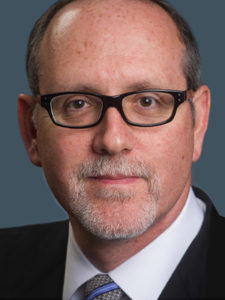
The therapeutic choices for treating osteoporosis aren’t as cut and dried as they once seemed, and it’s essential to keep the risk-benefit ratio in perspective.
“We have a lot of therapeutic options available, and some new ones on the horizon,” said Kenneth Saag, MD, MSc, the Jane Knight Lowe Professor of Medicine at the University of Alabama-Birmingham School of Medicine. “While it is clear that all of these medications can reduce fracture risks to varying degrees, there are potential risks that we have to be aware of as clinicians.”
Dr. Saag will open Osteoporosis: Bone- Breaking Newson Monday from 2:30 – 4:00 pm in Room W375b. He will focus on the current climate of complications.
“Relatively rare side effects from commonly used drugs — bisphosphonates — can occur in the range of 1 per 1,000 to 1 in 10,000, yet they are dominating the discussion,” Dr. Saag said. “The reality is that the risk of typical osteoporosis fracture is much, much greater than the very rare risk of osteonecrosis of the jaw, atypical femoral fracture, and other adverse events.”
Rather than avoiding treatment and subjecting patients to avoidable fracture risks, he said, clinicians should pay more attention to the early signs of adverse events. It is also important to discuss the risks and benefits of treatment with patients.

And clinicians must reassess risks and benefits in light of new data from both clinical trials and post-marketing surveillance.
Denosumab, for example, is an exceptionally effective therapy for reducing fracture risk. But market surveillance has revealed a loss of benefit when the medication is stopped and an elevation of fracture risk, factors that were not apparent from clinical trial data.
“When we use this agent — and there are some new data supporting its efficacy in steroid-induced osteoporosis — we should have an exit strategy when we begin therapy,” Dr. Saag noted.
One of the newer agents, romosozumab, is remarkably effective compared with bisphosphonate therapy, he continued. But at least one large trial of this monoclonal antibody compared with sclerostin showed an increased risk for cardiovascular events.
Osteoporosis associated with renal disease can also be complex. Renal disease can disrupt a number of bone-related hormones and growth factors that are not considerations in the more familiar age-related or postmenopausal osteoporosis.
“Patients with chronic kidney disease or renal transplants have very different considerations for bone health,” said Susan Ott, MD, Professor of Medicine and Metabolism, Endocrinology, and Nutrition at the University of Washington Medical Center, Seattle. “The pathophysiology of renal osteodystrophy is something that a lot of physicians, including rheumatologists, have never been taught.”
Disturbances in renal function can affect both calcium and phosphorus in unique ways, Dr. Ott noted. The risk of fracture related to osteoporosis in the setting of renal disease or transplantation is higher than in the general population, bone demineralization is caused by different physiological disturbances, and treatment considerations are different.
“One of the things that many rheumatologists never think about and most nephrologists have at the top of their minds is the ways conventional osteoporosis treatments can calcify the blood vessels,” she said. “The leading cause of death in these patients is heart disease. You need a medication that improves both blood vessel and bone health, which are linked by calcium and phosphate. The approaches to osteoporosis are very different when you don’t have to deal with renal issues at the same time.”
As difficult as treating osteoporosis in renal patients can be, bone health cannot be ignored. Fracture is an important cause of disability in this population, Dr. Ott noted. And even when pharmacotherapeutic options are limited, other approaches can help.
“There are times you have to talk with your patient and say, ‘We don’t have a good medicine, but there is room for other measures like improving muscle strength,’” she said. “If you don’t work to prevent fractures in these patients, they will have a lot of fractures and resulting disabilities that could have been avoided. Rheumatologists need to keep this in mind because so many of the inflammatory diseases they deal with have a component of renal failure.”
